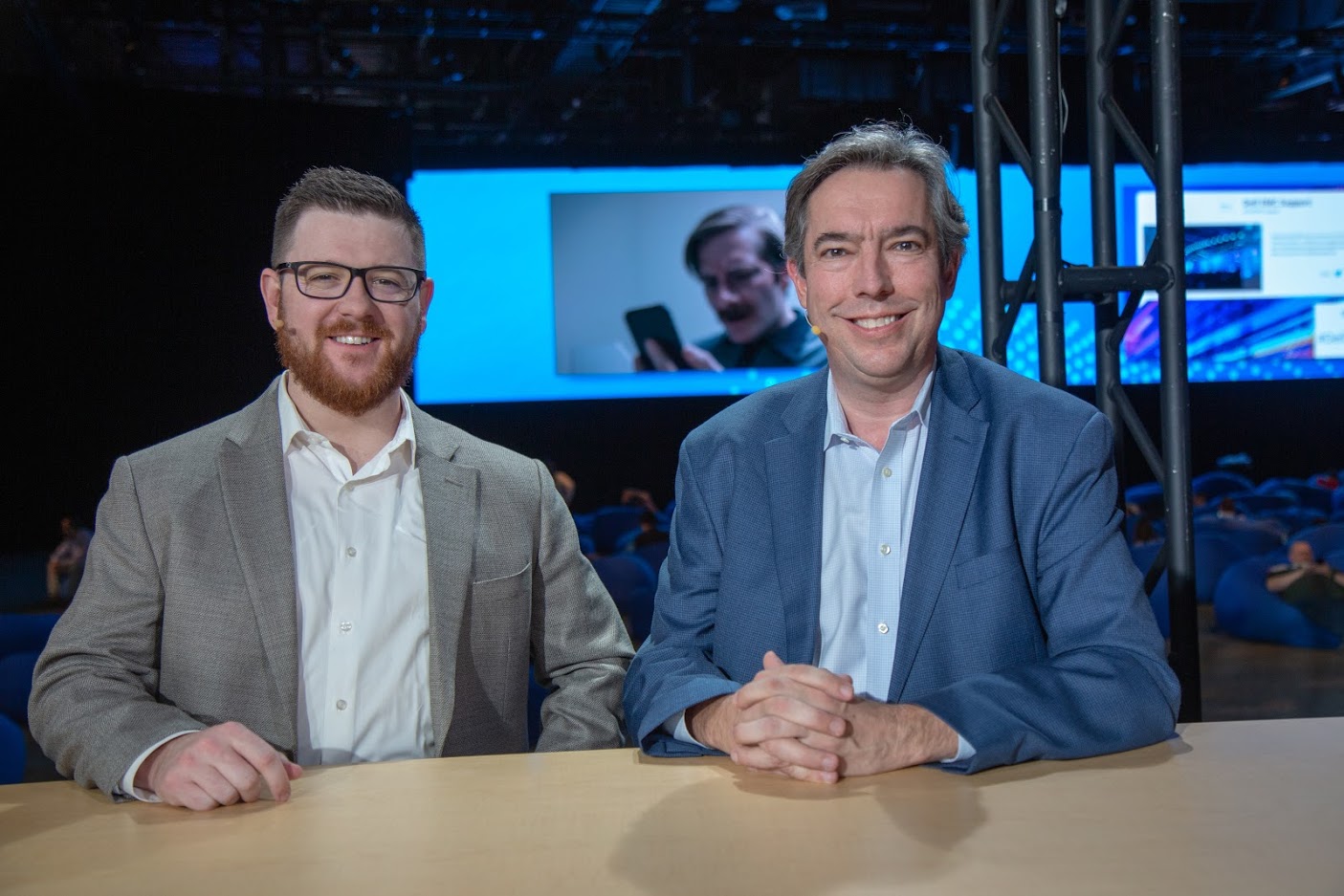 CLOUD
CLOUD
 CLOUD
CLOUD
 CLOUD
CLOUD
Protecting large amounts of data is challenging for enterprises overseeing dozens of offices strewn across the United States, all trying to uploads hundreds of gigabytes at the same time. Such was the case for GEI Consultants Inc. The scientific consulting company had to redesign its entire disaster and recovery network. To do so, it leveraged Dell EMC’s Cloud Disaster Recovery and Data Domain to protect sensitive scientific data stored in its 43 offices. This solution gave GEI the ability to do offline site backups for all locations, protecting data in all its forms.
Rob Emsley, director of product marketing at Dell EMC, and Adam Schmitt, network architect at GEI, spoke with Lisa Martin (@LisaMartinTV) and Dave Vellante (@dvellante), co-hosts of theCUBE, SiliconANGLE Media’s mobile livestreaming studio, during the Dell Technologies World event in Las Vegas. They discussed GEI’s perspective on data and protection strategies, Dell EMC’s Cloud D&R architecture, and much more (see the full interview with transcript here). (* Disclosure below.)
[Editor’s note: The following answers have been condensed for clarity.]
Martin: Before you were working with Dell EMC, what were you doing in terms of ensuring that GEI data was protected and accessible?
Schmitt: Each of the 43 GEI offices are dispersed in different geographical locations and have its infrastructure storing between three to 15 terabytes of size. For our older infrastructure, we had several [Dell EMC] Avamar servers doing file-level backups and restores. We couldn’t do any offline site backups in any locations. It was only a file-level backup; it wasn’t an actual full image. We also didn’t have a complete cloud picture yet that we could expand on going forward.
In one case, an office lost hardware in their actual infrastructure. So we had to restore the files at an off-site location, putting it on a USB hard drive, and shipping it to that location.
Vellante: What’s the architecture look like today?
Emsley: When you have a distributed network, where you have lots of edge locations and you have the requirement to protect them and bring them back to the core, the architecture that you deploy does make a difference.
You want to make the amount of data that you move, from the edge to the core, as small as possible. Because if you don’t, the amount of time that it takes to get data protected from the edge, especially when you have lots of edges, becomes a real constraint. So that was something which GEI was able to take advantage of.
Vellante: What was life like before [working with Dell EMC]?
Schmitt: We tried various technologies that claim that they could do it, [but] they didn’t work successfully. So after a lot of trial and error … about a year’s worth of trying, we finally got Dell EMC’s technical team and the [Data Protection Suite] team to help us paint this as a full-blown architecture and make this solution happen.
We deployed a virtual CentOS box in an Avamar proxy that talks back to the data domain and communicates the data changes back for backup. It’s not doing a full consecutive backup, so I can kick off backups during the day. It takes a snapshot, and then the data gets backed up without anybody knowing.
Vellante: So you’re talking about just checking the changed data and putting it through that straw. So each day, it’s just a smaller amount of data; but what happens on a restore?
Schmitt: We’ll restore that file if we’re doing a file-level restore to the data domain, and then copy it wherever we need to on the network. Or if we’re doing a full image-based backup, we can restore that either to the Cloud Disaster Recovery into [Amazon Web Services] or [Microsoft Azure], or we can restore it to the actual data domain and VMotion it wherever we need to after that point.
Martin: How is GEI’s business positively benefiting from this data protection strategy you’ve implemented?
Schmitt: We’ve eliminated the need for a completely separate off-site data center. We have everything running in a cloud environment for Dell EMC Cloud Disaster Recovery so that we can restore instantly anytime that we need to. The CDR allows us to use an appliance on-premise to talk to an instance server in AWS or Azure. After its normal backup period, it shoots all the data that changed up to AWS in an S3 bucket. We saved a huge amount of money on D&R infrastructure that otherwise would be just sitting there, not doing anything. Whereas we can just spend money on object storage in AWS and use that as our cloud disaster recovery strategy.
Plans for GEI is more cloud growth, minimizing the footprint that we have on-premise and consolidation of all of our data. So going forward with consolidating all [our] data into a central location, i.e., multicloud environments or Dell EMC cloud that was announced this week, we have the option for leveraging multicloud instances and being able to keep them alive in the cloud rather than on-premise.
Watch the complete video interview below, and be sure to check out more of SiliconANGLE’s and theCUBE’s coverage of the Dell Technologies World 2019 event. (* Disclosure: Dell Technologies Inc. sponsored this segment of theCUBE. Neither Dell nor other sponsors have editorial control over content on theCUBE or SiliconANGLE.)
THANK YOU